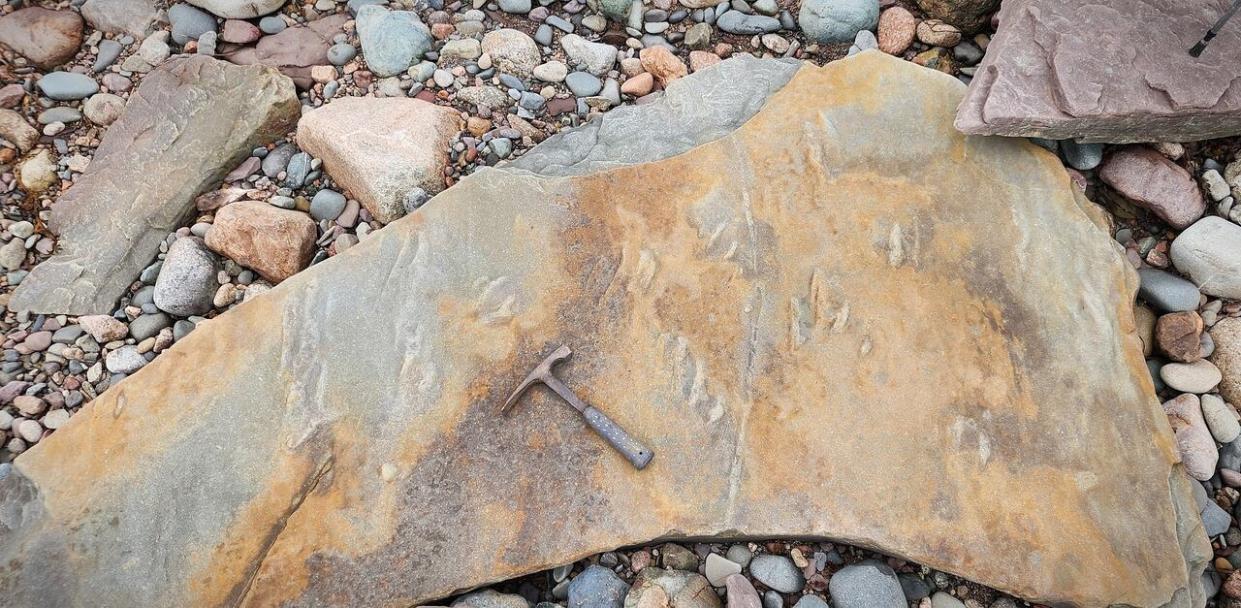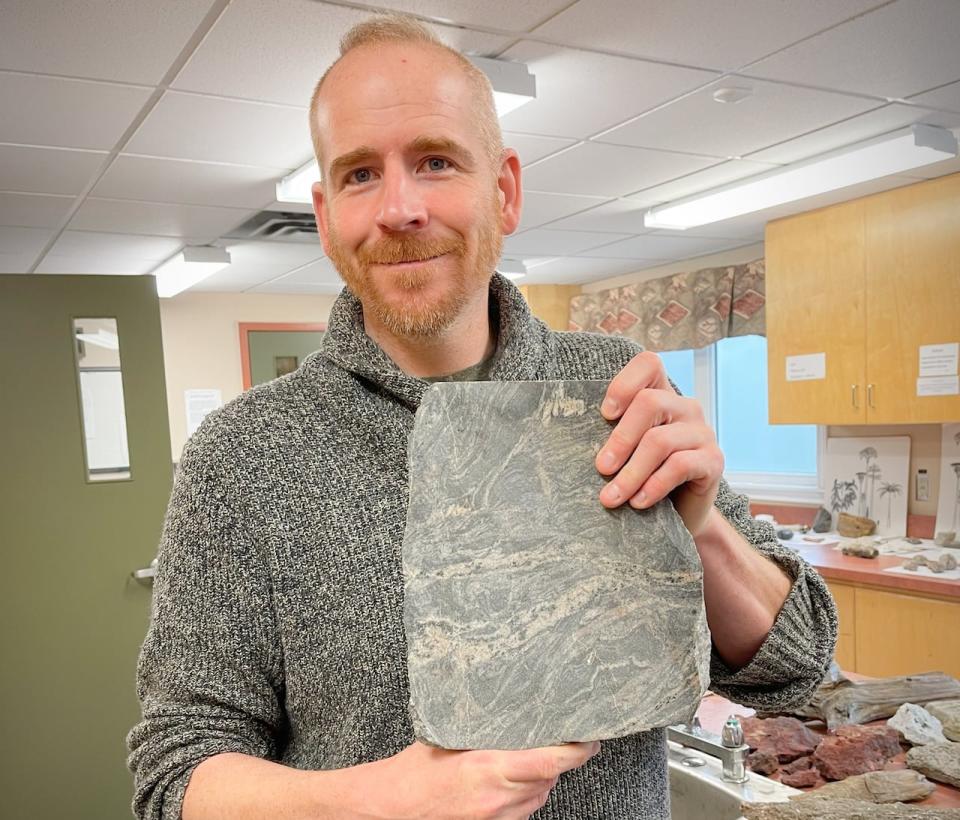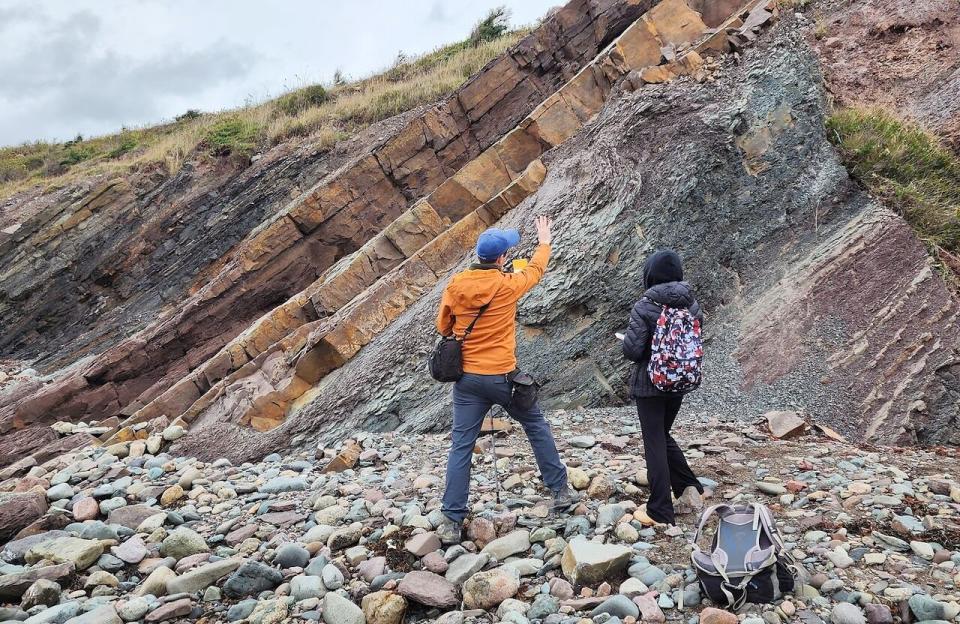Fossilized tracks of rare 320-million-year-old animal found in Cape Breton

People could be making tracks to see an impressive new exhibit of 320-million-year-old footprints at the Cape Breton Fossil Centre in Sydney Mines, N.S.
A group of geologists from Cape Breton University recently found fossilized claw imprints that are remarkable for their size and age.
"The stuff we get on Cape Breton and in Nova Scotia in general, it runs literally anywhere from an order of under a centimetre to a few centimetres," Jason Loxton, a senior geology instructor at CBU and curator of the Cape Breton Fossil Centre in Sydney Mines, told CBC Cape Breton's Information Morning.
"These things for context ... are as big as if I take my hand and put it flat on the table, my fingers slightly spread out, the size of an adult man's hand. This is a big beast."
The discovery was made in November while geologist Ted Matheson and a student were doing unrelated research on sedimentary structures related to earthquakes near Creignish, Inverness County.
Loxton was due to arrive the next day, so they sent him a picture of what looked like footprints.
Loxton said he initially dismissed them, until he got to the site and saw them in person.

CBU geology instructor Jason Loxton, who is also curator of the Cape Breton Fossil Centre in Sydney Mines, holds up a fossil specimen at the museum in this file photo. (George Mortimer/CBC)
He then took his own picture and sent it to Matt Stimson at the New Brunswick Museum.
"[I] get a message that comes back immediately that says, 'Yep, footprint.' That got us excited," Loxton said.
Stimson said the find is rare in Atlantic Canada, because most of the rocks from the Mississippian period are buried beneath material from the Carboniferous period.
"We don't know the exact animal that made these tracks, but given the time period, the size and the shape of the feet, we can say it's probably something called an anthracosaur, which is a transitional animal between amphibians and reptiles," Stimson said.
Stimson said the find is important because few bones from that era are ever found and the new tracks provide evidence that the area was not just the domain of small animals.
"To find the largest footprint in that time period that we know of so far, the apex predator, is a really significant discovery."
Loxton said the fossil appears to be what you would see if a crocodile-like animal was swimming in shallow water.
Pulling across the mud
"Imagine you got your hand and you just lightly graze your fingertips, pulling them across mud.... what you are going to leave behind are a series of parallel lines," he said.
"Imagine if you did that a few times kind of sloppily. So sometimes you hit all your fingers, sometimes you hit just a couple of them. That's exactly what it looks like."
Most rocks on the surface in Cape Breton come from the end of the Carboniferous period, when the world was covered by thick, tropical swamps, Loxton said.
Creignish is one of the few spots where rocks from the Mississippian period are accessible at the surface and footprints are regularly found, but not of that size.

CBU geology professor Ted Matheson and student Jessica MacIsaac examine the landscape near Creignish, where Matheson first spotted the fossilized tracks. (Submitted by Jason Loxton)
Loxton said fossils are often found by geologists and others just looking around.
"The reality is almost all of the important fossils we study were found by accident, often by a non-paleontologist and this is exactly the same case."
The tracks are in a sandstone block about 15 centimetres thick, two metres long and a metre wide.
Loxton said the fossil centre has a permit to place the fossil in its collection, but if the stone is too heavy to move, he will take more pictures and build a 3-D model.
MORE TOP STORIES

